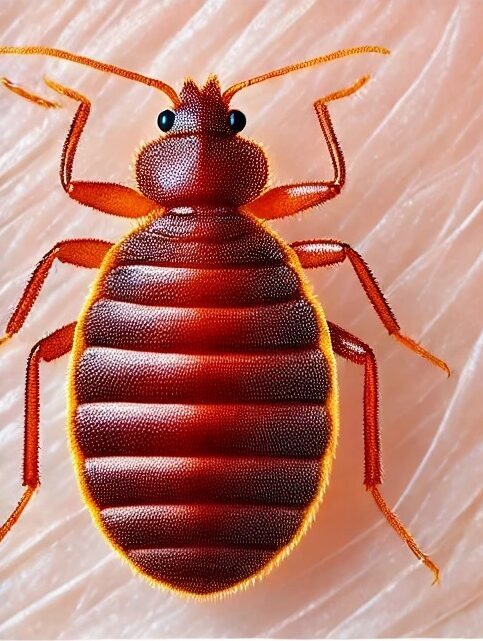Bed bugs. Just hearing those two words is enough to make anyone feel itchy. These tiny pests are notorious for being tough to spot and even tougher to get rid of. But how do they end up in your home in the first place? You might be surprised to learn that certain environmental factors make your home more inviting to bed bugs.
At Thermopest, we’ve seen how these pests take advantage of homes, and understanding what attracts them is key to prevention. In this guide, we’ll explore the factors that make your home a bed bug’s dream and, more importantly, how to avoid them.

Understanding what bed bugs need helps explain why they might choose your home and how to make it less inviting for them.
Certain conditions and habits can make your home more attractive to bed bugs. Let’s break down the most common factors.
Bed bugs are drawn to warmth and carbon dioxide. When we’re asleep, we release both heat and CO2, which naturally attracts these pests to our beds. That’s why they’re often found in mattresses, bed frames, and around sleeping areas.
Bed bugs love clutter because it provides endless hiding spots for them to escape detection. Keeping a tidy and clutter-free home not only makes your space more comfortable but also reduces the number of hiding places for bed bugs.
If you live in or near a place with lots of people coming and going—think hotels, dormitories, or even shared workspaces—you’re at greater risk. These high-traffic areas are bed bug hotspots because bed bugs travel by hitching rides on people’s clothing, luggage, or personal items.
Bed bugs thrive in areas with fabric. They can easily hide in the seams of mattresses, upholstered furniture, and even curtains. The more fabric-heavy furniture you have, the more places bed bugs have to settle in.
If you live in a block of flats, an apartment, or a shared living space, bed bugs can move easily between units through walls, vents, and even electrical outlets. It’s much easier for them to spread in multi-unit buildings compared to standalone homes.
In addition to environmental factors, certain habits can increase your chances of a bed bug infestation.
Travelling often? Bed bugs are known to hitch a ride on your luggage, clothes, and even your shoes after staying in hotels or other shared accommodations. Once they’re in your suitcase, it’s just a short trip back to your home. If you’re in areas like London or Bristol, staying cautious during travel is even more essential.
Second-hand furniture or clothes can be risky. Bed bugs can hide in the seams of sofas, chairs, or even the folds of a jumper. Always inspect used items carefully before bringing them into your home, and treat them if necessary. Check items especially if they come from areas prone to infestations, like Southampton.
If your neighbour has a bed bug infestation, you could be at risk too. Bed bugs can crawl through walls, floors, and ceilings, spreading from one home to the next, especially in closely packed housing. It’s crucial to be aware, particularly in multi-unit dwellings in areas such as Bournemouth.
Sometimes, bed bug infestations go untreated for too long or aren’t handled properly, allowing the problem to grow.
Now that we know what attracts bed bugs, let’s focus on how to keep them away.
One of the easiest ways to make your home less appealing to bed bugs is to declutter. By keeping your space tidy and eliminating excess clutter, you take away their hiding spots.
A bed bug-proof mattress cover can help stop bed bugs from settling in your bed. These covers seal your mattress, making it much harder for bed bugs to hide inside or come out to bite you at night.
Frequent cleaning, especially around your bed and furniture, can help prevent bed bugs from setting up shop. Make sure to vacuum carpets, furniture, and under your bed regularly. If you suspect bed bugs, empty the vacuum cleaner straight into a sealed bag and dispose of it outside.
Always inspect furniture and clothing for signs of bed bugs before bringing them into your home. Look for small black spots, tiny white eggs, or shed skins. If you’re unsure, treat the item before using it.
Bed bug monitors or interceptors can be placed under bed legs and in strategic areas around your home. These small traps can catch bed bugs before an infestation grows, giving you peace of mind.
If you’ve noticed signs of bed bugs—such as itchy bites, black spots on your mattress, or shed skin—here’s what to do next.
Keep an eye out for red bites, blood spots on your sheets, or tiny faecal stains. Bed bugs can also shed their skins as they grow, leaving pale shells behind.
If you suspect bed bugs in your bed or furniture, isolate the area. Remove bedding and clothes carefully, sealing them in plastic bags before washing them on a hot cycle.
Bed bugs are notoriously difficult to eliminate on your own. At Thermopest, we specialise in professional bed bug treatments to ensure they’re gone for good.

Preventing bed bugs is all about making your home an unappealing environment for them. Declutter, clean regularly and stay cautious when travelling or bringing second-hand items into your home. And if you ever suspect bed bugs, don’t hesitate to contact Thermopest. We’re here to help you get rid of bed bugs quickly and efficiently, so you can rest easy knowing your home is pest-free.